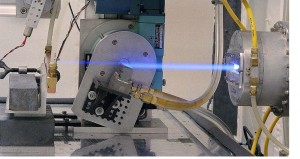WEDNESDAY, 3 AUGUST 2011
 Superconductors are materials with zero electrical resistance when cooled below a critical temperature. While their unusual properties have been employed in MRI and particle accelerators, they have also posed a challenge to theoretical physicists.
Superconductors are materials with zero electrical resistance when cooled below a critical temperature. While their unusual properties have been employed in MRI and particle accelerators, they have also posed a challenge to theoretical physicists.Interactions between electrons are a key component of superconductors, and can be measured by photoemission spectroscopy: as light is directed onto the surface of the material, electrons are emitted and can be recorded in a spectrum. At high temperatures, superconducting materials give unusually broad spectra, indicating extremely strong interactions, or correlations, between electrons.
While Landau’s Fermi liquid theory successfully models weakly-interacting electrons, it is less successfully applied to systems with extreme correlations. Professor Sriram Shastry has developed new calculations that accurately correspond with experimental data [1]. He has applied his model to data from high-temperature superconductors exposed to both low-energy lasers and synchrotron radiation.
Although the same material gives significantly different photoemission spectra when exposed to these sources, the model fits with absolute precision, suggesting that the two techniques are consistent with each other and that Shastry’s calculations are on the right track [2] .
Written by Robert Jones
